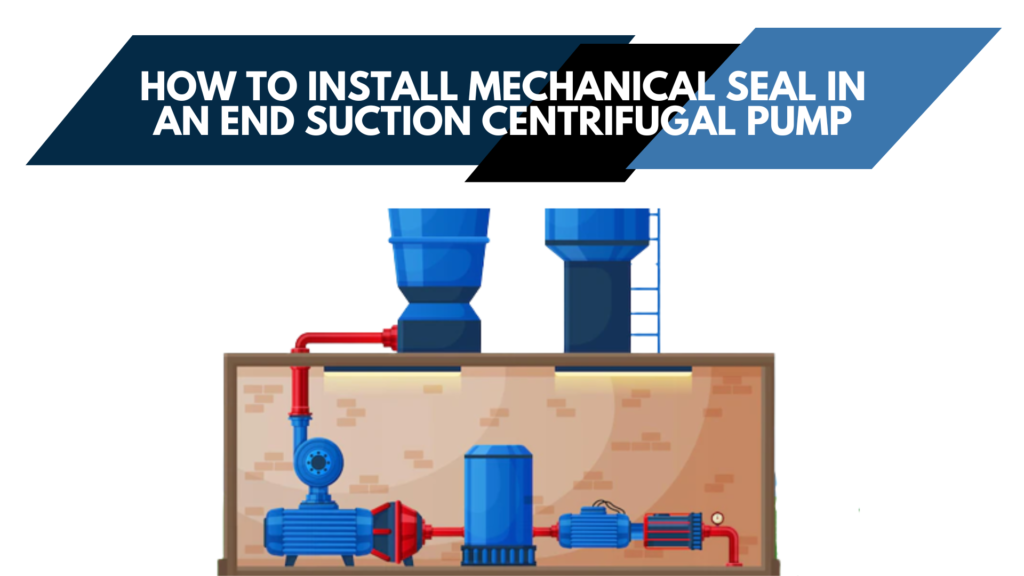
Centrifugal pumps have a rotating shaft that sticks out from the back of the pump casing through a seal chamber or stuffing box. The mechanical seal is needed to prevent fluid from leaking into the atmosphere along this shaft. Failure of these mechanical seals can have serious implications for the pump’s safety and reliability. It is therefore very important to install the seal properly.
How a Mechanical Seal Works in an End Suction Centrifugal Pump
A mechanical seal needs two smooth and flat seal faces in contact, one that is rotating with the shaft and another that is stationary with the casing. The faces are sealed to their holders using secondary seals. These are flexible so that they’re placed in contact and move to compensate for any misalignments or wear and tear. The faces however need lubrication to function at their best.
Steps for Installing a Mechanical Seal in Centrifugal Pumps
Here are 7 simple steps to follow when you are installing or replacing a mechanical seal in end suction centrifugal pumps:
1. Make sure the power is off
Make sure you cut the power so that the motor is not in motion. It’s even better to be doubly sure by cutting the main supply so that the motor may not start up while you’re working on it.
2. Isolate the fluid from the pump
Next up, shut both inlet and outlet isolation valves and drain the pump casing by removing the drain plug.
3. Dismantle the pump
Use a wrench to unscrew the bolts holding the housing of the pump in place. Detach the pump carefully and keep the bolts safe for reassembly later.
4. Identify the stuffing box arrangement
If the pump is of the back pull-out design, remove the spacer element in the coupling, remove the casing bolts and pull the pump away from the casing. You can then access the seal without having to disconnect the casing from the piping.
In case the pump is not a ‘back pull-out design, you’ll have to completely disconnect the pump after you disconnect the coupling between the pump and shaft. If the pump is a close-coupled design, you’ll have to remove the entire pump.
5. Remove the impeller
Dismantle the impeller of the pump. You can find the seal located on the shaft behind the impeller. Detach the shaft by holding it in place using a wrench and then rotate the impeller to unscrew it.
6. Detach the old seal
After removing the impeller, you can access both the rotary and stationary seal parts. The parts are usually held in place with screws all along the shaft. Remove the screw and pull away the rotary seal parts, and then remove the stationary part of the seal.
7. Replace the seal
Now place the replacement seal parts along the shaft. Push the stationary part into the casing using a new o-ring or gasket material.
For any guidance on your centrifugal pumps, including all your sealing needs, feel free to speak to our experts at 022 43436655 or email us at marketing@vemc.co.in. We at VEMC are authorised Kirloskar dealer based in Mumbai and deal in a range of Kirloskar centrifugal pumps including multistage centrifugal pumps, (also called horizontal multistage pumps).


